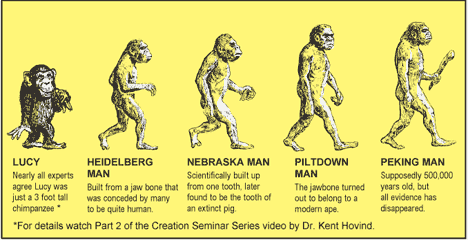I understand because I brought up the fine tuning parameters which you and the atheist science side had no response for. Initially, Stephen Hawking used multiverses or parallel universes to counter the fine tuning, but it ran into problems with Einstein's TOR.
In his final research, he's gone from quantum mechanics before the big bang to string theory because of the math and Einstein's TOR.
'"The usual theory of eternal inflation predicts that globally our universe is like an infinite fractal, with a mosaic of different pocket universes, separated by an inflating ocean," said Hawking in an interview last autumn. "The local laws of physics and chemistry can differ from one pocket universe to another, which together would form a multiverse. But I have never been a fan of the multiverse. If the scale of different universes in the multiverse is large or infinite the theory can't be tested. "
In their new paper, Hawking and Hertog say this account of eternal inflation as a theory of the
big bang is wrong. "The problem with the usual account of eternal inflation is that it assumes an existing background universe that evolves according to Einstein's theory of general relativity and treats the quantum effects as small fluctuations around this," said Hertog. "However, the dynamics of eternal inflation wipes out the separation between classical and quantum physics. As a consequence, Einstein's theory breaks down in eternal inflation."
"We predict that our universe, on the largest scales, is reasonably smooth and globally finite. So it is not a fractal structure," said Hawking.
The theory of eternal inflation that Hawking and Hertog put forward is based on string theory: a branch of theoretical physics that attempts to reconcile gravity and general relativity with quantum physics, in part by describing the fundamental constituents of the universe as tiny vibrating strings. Their approach uses the
string theory concept of holography, which postulates that the universe is a large and complex hologram: physical reality in certain 3-D spaces can be mathematically reduced to 2-D projections on a surface.
Hawking and Hertog developed a variation of this concept of holography to project out the time dimension in eternal inflation. This enabled them to describe eternal inflation without having to rely on Einstein' theory. In the new theory, eternal inflation is reduced to a timeless state defined on a spatial surface at the beginning of time.
"When we trace the evolution of our universe backwards in time, at some point we arrive at the threshold of eternal inflation, where our familiar notion of time ceases to have any meaning," said Hertog.
Hawking's earlier 'no boundary theory' predicted that if you go back in time to the beginning of the universe, the universe shrinks and closes off like a sphere, but this new theory represents a step away from the earlier work. "Now we're saying that there is a boundary in our past," said Hertog.
Hertog and Hawking used their new theory to derive more reliable predictions about the global structure of the universe. They predicted the universe that emerges from eternal inflation on the past boundary is finite and far simpler than the infinite fractal structure predicted by the old theory of eternal
inflation.
Their results, if confirmed by further work, would have far-reaching implications for the multiverse paradigm. "We are not down to a single, unique universe, but our findings imply a significant reduction of the multiverse, to a much smaller range of possible universes," said Hawking.
This makes the theory more predictive and testable.
Hertog now plans to study the implications of the new theory on smaller scales that are within reach of our space telescopes. He believes that primordial gravitational waves – ripples in spacetime – generated at the exit from
eternal inflation constitute the most promising "smoking gun" to test the model. The expansion of our
universe since the beginning means such gravitational waves would have very long wavelengths, outside the range of the current LIGO detectors. But they might be heard by the planned European space-based gravitational wave observatory, LISA, or seen in future experiments measuring the cosmic microwave background.'
Professor Stephen Hawking's final theory on the origin of the universe, which he worked on in collaboration with Professor Thomas Hertog from KU Leuven, has been published today in the Journal of High Energy Physics.

phys.org
You would've brought up Hawking's final work already to top what I had you known any of Hawking's work, so it PROVES it is YOU
who does not understand. LMAO.


